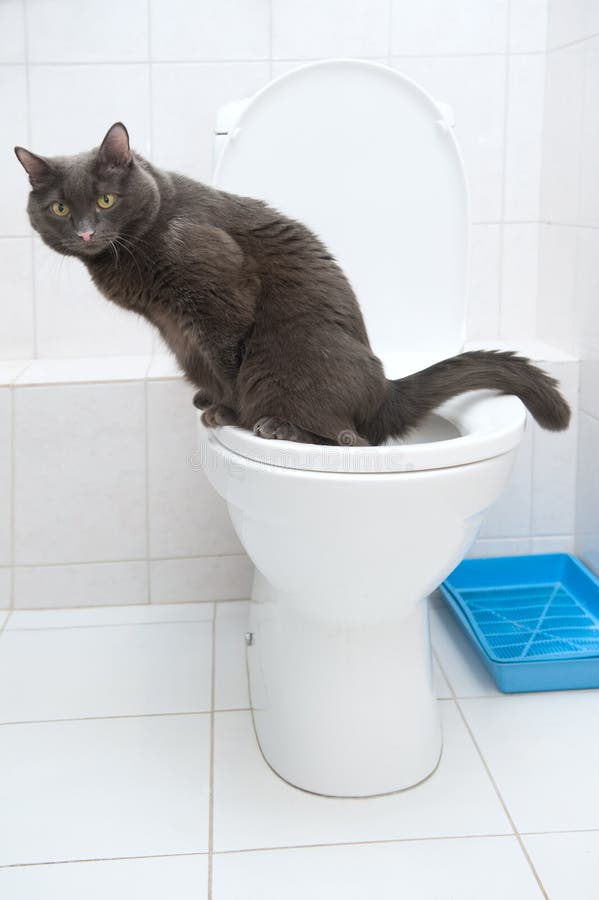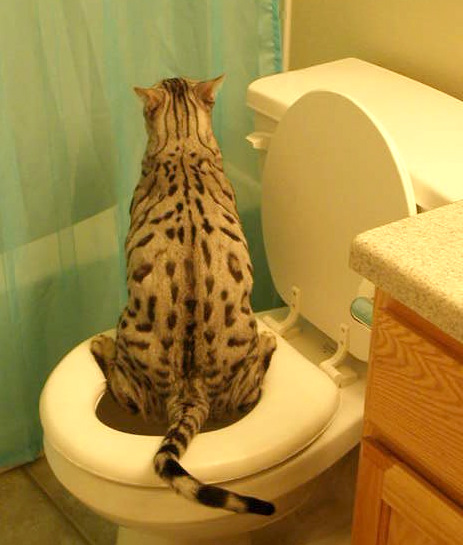Prevent Plumbing Problems: Don't Flush Cat Poop Down Your Toilet - Professional Guidance
Prevent Plumbing Problems: Don't Flush Cat Poop Down Your Toilet - Professional Guidance
Blog Article
Each person will have their own individual assumption in relation to Can You Flush Cat Poo or Litter Down the Toilet?.

Introduction
As feline proprietors, it's important to be mindful of just how we throw away our feline good friends' waste. While it may seem convenient to purge cat poop down the bathroom, this practice can have damaging effects for both the environment and human wellness.
Environmental Impact
Purging feline poop presents damaging virus and bloodsuckers into the water supply, posing a considerable risk to water ecological communities. These contaminants can adversely impact aquatic life and compromise water high quality.
Health Risks
Along with ecological problems, purging feline waste can likewise present wellness threats to people. Feline feces may have Toxoplasma gondii, a parasite that can trigger toxoplasmosis-- a potentially severe health problem, particularly for expecting women and individuals with damaged immune systems.
Alternatives to Flushing
Fortunately, there are more secure and extra accountable means to deal with feline poop. Think about the complying with options:
1. Scoop and Dispose in Trash
One of the most usual technique of getting rid of cat poop is to scoop it right into an eco-friendly bag and throw it in the garbage. Make sure to make use of a specialized litter scoop and take care of the waste quickly.
2. Use Biodegradable Litter
Select biodegradable cat clutter made from materials such as corn or wheat. These litters are environmentally friendly and can be securely taken care of in the garbage.
3. Hide in the Yard
If you have a lawn, think about hiding cat waste in a designated location away from veggie gardens and water resources. Make certain to dig deep enough to prevent contamination of groundwater.
4. Set Up a Pet Waste Disposal System
Purchase a family pet garbage disposal system specifically created for pet cat waste. These systems use enzymes to break down the waste, minimizing odor and environmental effect.
Verdict
Liable pet possession expands beyond offering food and shelter-- it also involves proper waste monitoring. By refraining from flushing feline poop down the commode and choosing different disposal methods, we can reduce our environmental impact and protect human health and wellness.
Why Can’t I Flush Cat Poop?
It Spreads a Parasite
Cats are frequently infected with a parasite called toxoplasma gondii. The parasite causes an infection called toxoplasmosis. It is usually harmless to cats. The parasite only uses cat poop as a host for its eggs. Otherwise, the cat’s immune system usually keeps the infection at low enough levels to maintain its own health. But it does not stop the develop of eggs. These eggs are tiny and surprisingly tough. They may survive for a year before they begin to grow. But that’s the problem.
Our wastewater system is not designed to deal with toxoplasmosis eggs. Instead, most eggs will flush from your toilet into sewers and wastewater management plants. After the sewage is treated for many other harmful things in it, it is typically released into local rivers, lakes, or oceans. Here, the toxoplasmosis eggs can find new hosts, including starfish, crabs, otters, and many other wildlife. For many, this is a significant risk to their health. Toxoplasmosis can also end up infecting water sources that are important for agriculture, which means our deer, pigs, and sheep can get infected too.
Is There Risk to Humans?
There can be a risk to human life from flushing cat poop down the toilet. If you do so, the parasites from your cat’s poop can end up in shellfish, game animals, or livestock. If this meat is then served raw or undercooked, the people who eat it can get sick.
In fact, according to the CDC, 40 million people in the United States are infected with toxoplasma gondii. They get it from exposure to infected seafood, or from some kind of cat poop contamination, like drinking from a stream that is contaminated or touching anything that has come into contact with cat poop. That includes just cleaning a cat litter box.
Most people who get infected with these parasites will not develop any symptoms. However, for pregnant women or for those with compromised immune systems, the parasite can cause severe health problems.
How to Handle Cat Poop
The best way to handle cat poop is actually to clean the box more often. The eggs that the parasite sheds will not become active until one to five days after the cat poops. That means that if you clean daily, you’re much less likely to come into direct contact with infectious eggs.
That said, always dispose of cat poop in the garbage and not down the toilet. Wash your hands before and after you clean the litter box, and bring the bag of poop right outside to your garbage bins.
https://trenchlesssolutionsusa.com/why-cant-i-flush-cat-poop/

I recently found that review on How to Dispose of Cat Poop and Litter Without Plastic Bags when doing a search on the web. Sharing is good. Who knows, you could be helping someone out. We value reading our article about How to Dispose of Cat Poop and Litter Without Plastic Bags.
Request Appointment Report this page